Prescribed burning may benefit rattlesnakes
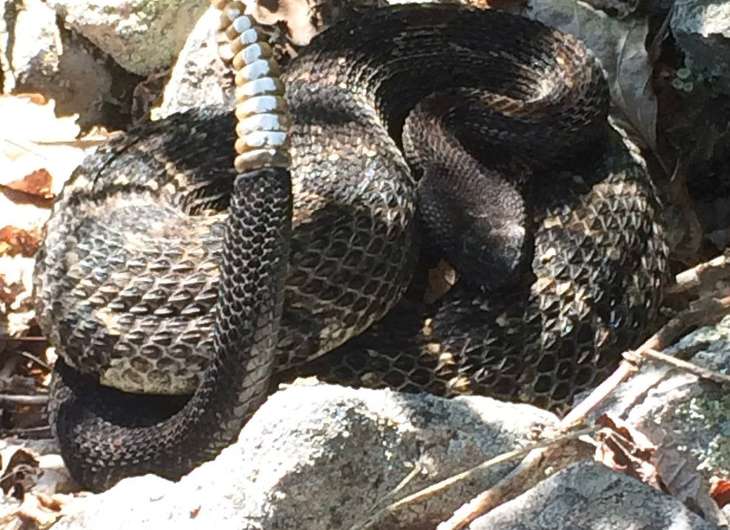
A forest at first appears devastated after a fire, devoid of color. Ash and smoky plant remains cover the forest floor. In a few short weeks, however, shrubs and forbs will poke through the ash, taking advantage of the nitrogen that was released during the fire. Turkeys will feed on the remains of dead insects, and small mammals will emerge from their burrows to feed on seeds of oaks and hickories, whose thick bark protected them from the heat of the fire.
But what of less visible animals? Penn State postdoctoral researcher Chris Howey is investigating how fire changes the landscape for often overlooked animals, like reptiles.
"When you think about the conservation of an animal, you think about food resources and shelter—the physical habitat," says Howey. "But when you start thinking about reptiles, they go beyond that; they also need thermal resources."
As ectotherms, reptiles depend on their surroundings to maintain their body temperature, basking in the sunshine to warm up or seeking shady areas to cool down. This dependence may make them particularly sensitive to changes in the landscape made by burning. To find out, Howey is studying the effects of controlled burns on timber rattlesnakes (Crotalus horridus), which are a candidate species of concern in Pennsylvania and an important part of the food chain. Understanding how timber rattlers respond to fire will help wildlife managers conserve the species.
Before a burn
Forest managers in Pennsylvania started using controlled burns in 2010, primarily to remove unwanted or invasive tree species, control insects and disease, or remove forest understory and debris that may fuel larger fires. But fire also changes the habitat of forest animals in more subtle ways, such as by changing the amount of light shining through the canopy, which affects temperatures on the forest floor.
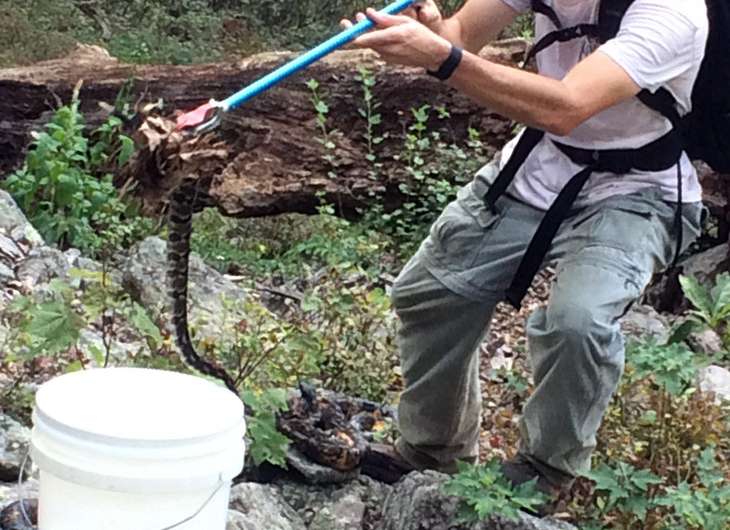
Before Howey can determine how burning affects rattlesnakes, he must first understand their thermal biology: what temperatures snakes prefer, what temperatures are available to them in an unburned forest, and how those temperatures differ.
"Snakes in particular are good organisms for looking at questions about thermal biology, because they're basically just a big tube," says Howey. "You don't have to worry about limbs and fur, which affect heat exchange."
To determine what temperatures rattlesnakes prefer, Howey brings them into the lab and puts them in a thermal gradient.
"This is just a really big box that contains a gradient of temperatures ranging from 14 or 16 degrees Celsius [57 to 60 degrees F] all the way up to 42 degrees Celsius [108 degrees F]," says Howey. "This gives snakes an option of temperatures they can choose from." After a few hours, he measures their internal body temperature, which is called their preferred body temperature. Howey found that on average, rattlesnakes in the thermal gradient preferred a body temperature of around 78°F—much cooler than the human average of 98.6°F.
Howey then determines what temperatures are available to snakes in the wild by placing a simple model of a snake at sunny and shady locations around the forest. The model is made of a copper tube painted to match the color of a rattlesnake. A small thermometer inside the tube records the temperature. The model reaches the same temperature that a snake would at that site, and, because it's made of metal, it warms up faster than a snake would, allowing Howey to quickly obtain readings.
Howey then compares the temperatures that snakes prefer in the lab to those available in forests. His work with the snake models shows that snakes basking at various locations on the forest floor would only occasionally reach temperatures as high as 78°F, even during the summer, meaning good basking spots may rarely be available to snakes in the wild. Snakes can survive at lower temperatures, but they likely do not perform as well as they could.
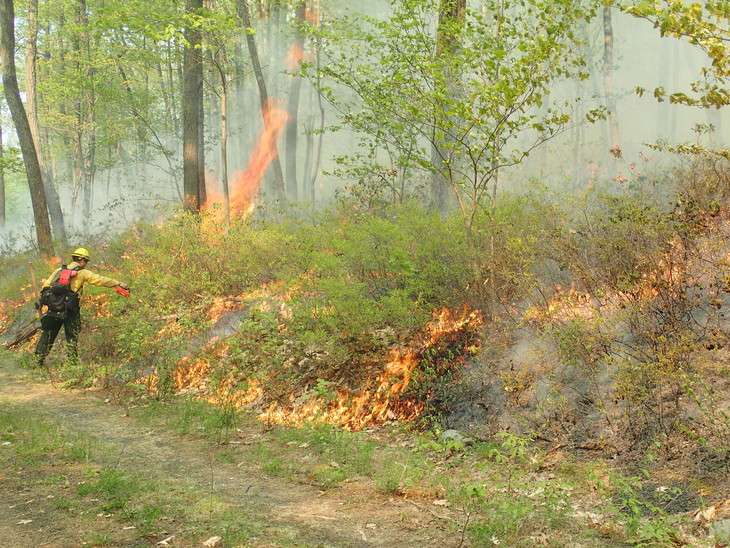
Consequences of Burning
Because good basking spots may be uncommon in unburned forests, prescribed burning may actually improve the thermal landscape for rattlesnakes.
"As we burn the landscape, we're going to remove a lot of the understory vegetation, and potentially some overstory vegetation, like big trees," says Howey. "By decreasing this 'roof,' we're going to provide them with more opportunities to bask in the open and to maintain a warmer body temperature. This then could translate to things like digesting a meal a little bit better, growing a little bit faster, reaching sexual maturity sooner, and maybe even having more babies. And this is going to improve the population overall."
Burning may help snakes in other ways, too.
"Following a burn, we start to see a lot of regeneration of seed-bearing plants and oaks. This is going to provide food for things like rodents and they are going to be food for rattlesnakes." To assess this, Howey and his team are measuring the abundance of acorns and small mammals before and after a burn.
Although burning may increase numbers of prey, the openness of burned sites may also lead to increased numbers of predators, such as hawks, bears, and raccoons.
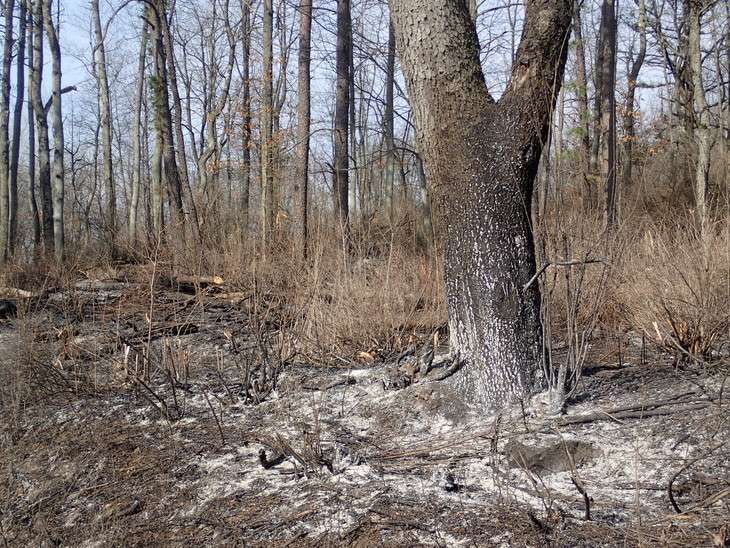
"If we have a site that's too open, we may start to get more predators," says Howey. "So we're trying to find a happy medium where we have good thermal quality but not as many predators."
Surviving the burn
But how do rattlesnakes survive the burn itself?
"We don't know," says Howey. "One of the big objectives of this project is to figure out what rattlesnakes here in Pennsylvania do to survive a prescribed burn. Fire is a natural occurrence within the landscape, and so you would assume they would have evolved alongside of it." Some snake species flee underground or under structures that are large enough to protect them during a fire. Some rattlesnake species, however, flee into brush piles, which soon become engulfed in flames.
"That's obviously not a good escape tactic," says Howey. "We don't know yet whether or not our snakes will do these behaviors."
To find out, he is radio-tracking rattlesnakes before, during, and after prescribed burns.
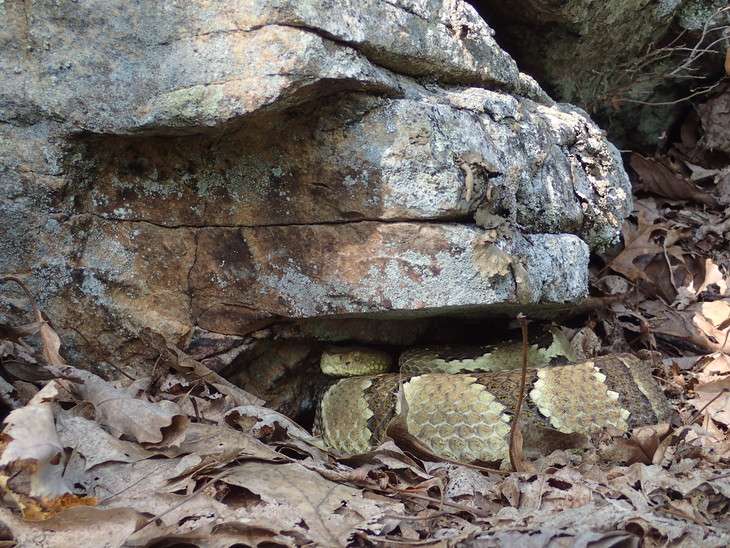
"We capture a snake, bring it back to the lab, anesthetize it, and surgically implant a transmitter into the body cavity," says Howey. "Then we give the animal a couple days to heal—they heal very, very quickly—and then we release it."
The transmitters are smaller than one's thumb and weigh just over 3 grams, or about 2% of a snake's natural body weight.
"The animal knows it's carrying something around," says Howey, "but it's very minimal to them."
Howey says he can track a snake for up to two years before the battery dies. He brings the snake back to the lab to remove the transmitter before that occurs.
The tracking will reveal how much time snakes spend at different sites throughout the day, allowing Howey to determine whether fire changes where snakes bask or look for food. In addition to providing location data, the radio transmitter also detects the temperature of the snake and changes in its pulse rate as the snake gets warmer. This will indicate whether snakes are maintaining non-ideal body temperatures at certain sites.
Depending on how snakes respond during the burn itself, forest managers could alter when they perform prescribed burns. Burns are usually conducted during the spring, after the trees leaf out.
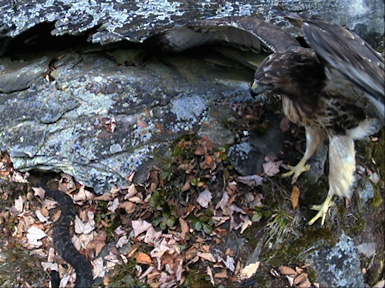
"In the spring, all their energy resources are in those leaves. In the wintertime, all of their energy resources are in the roots, so if you burn at that time you're not really having much of an impact," says Howey.
But spring is also when rattlesnakes are most active. If they are able to survive the burn, by fleeing underground for example, then burns can be performed during the spring without any negative effects on the snakes.
"But if burning does have negative consequences directly on snakes, if more of them die in the burn, maybe we need to burn more in the winter, or before the rattlesnakes become active out on the landscape."
Why help snakes?
Rattlesnakes are dangerous, but their reputation may be exaggerated. In Pennsylvania, there has only been one human death in recorded history due to a rattlesnake bite, and that individual had an allergic reaction to the venom. Typically, individuals who receive antivenin within an hour or two of being bitten will be not suffer lasting ill effects. Nonetheless, Howey and his team follow a strict safety protocol around rattlesnakes.
Some may question the wisdom of increasing timber rattlesnake numbers. But Howey doesn't think that more snakes will mean more encounters with humans. We rarely notice rattlesnakes, he says, partly because they rarely rattle.
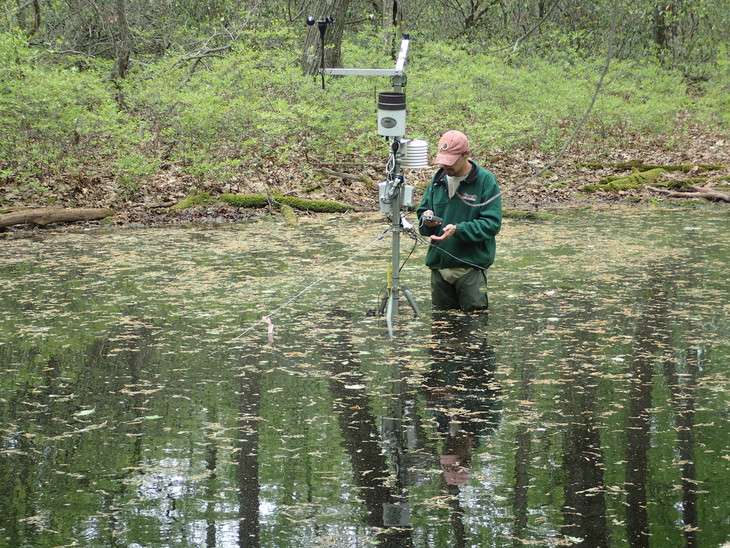
"They really only rattle when they feel threatened, and then they're mainly letting you know, 'Hey, I'm here, please leave me alone.' "
Interactions between humans and rattlesnakes usually occur around trails, according to Howey, and, after a burn, humans will probably encounter snakes more often only if we encroach on their habitat.
Besides, having more rattlesnakes in forests could actually benefit humans. Rattlesnakes help keep rodent populations in check, which are a major vector of the ticks that carry Lyme disease and other pathogens. Controlling rodent populations may also help other important species that compete with them for food, such as deer and wild turkey.
"I'm not saying we need to be overrun by rattlesnakes," says Howey, "but having a healthy presence of them within the landscape would be a really good thing."
Provided by Pennsylvania State University


















